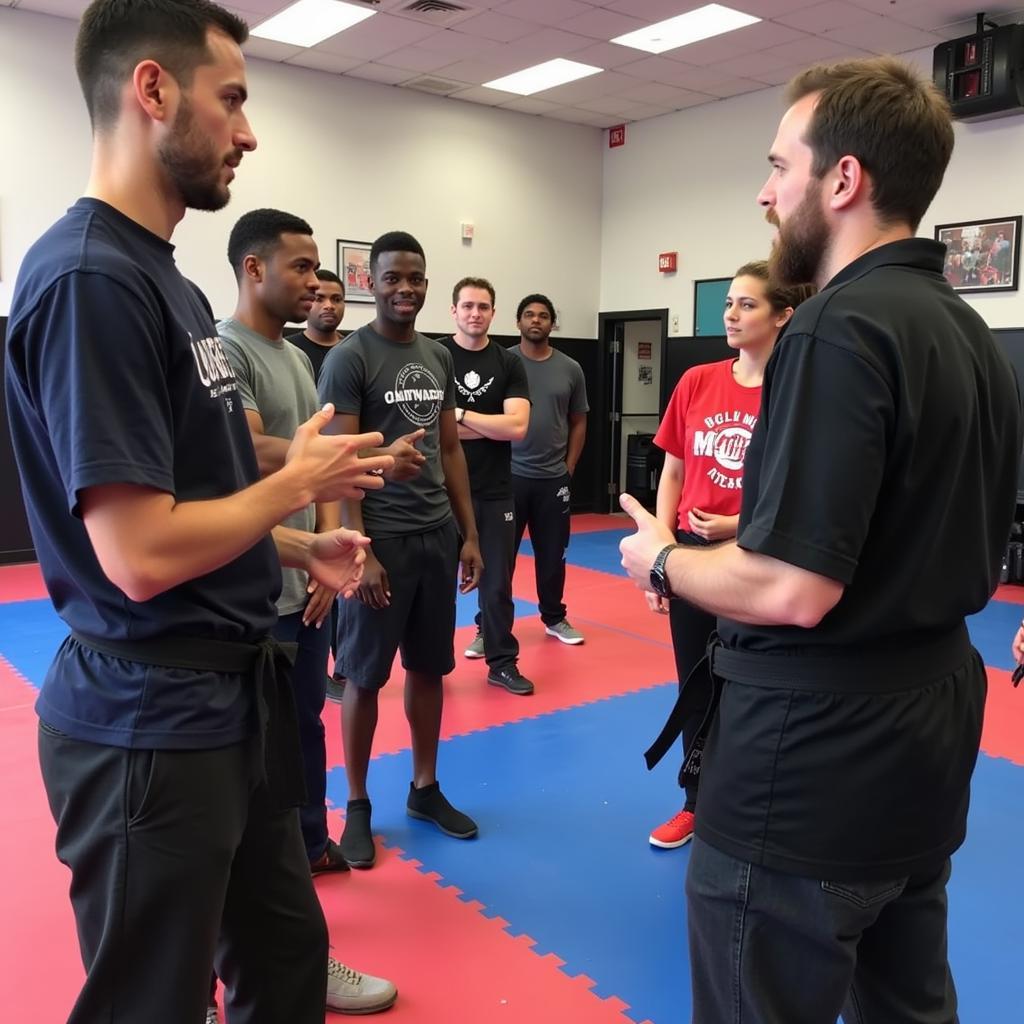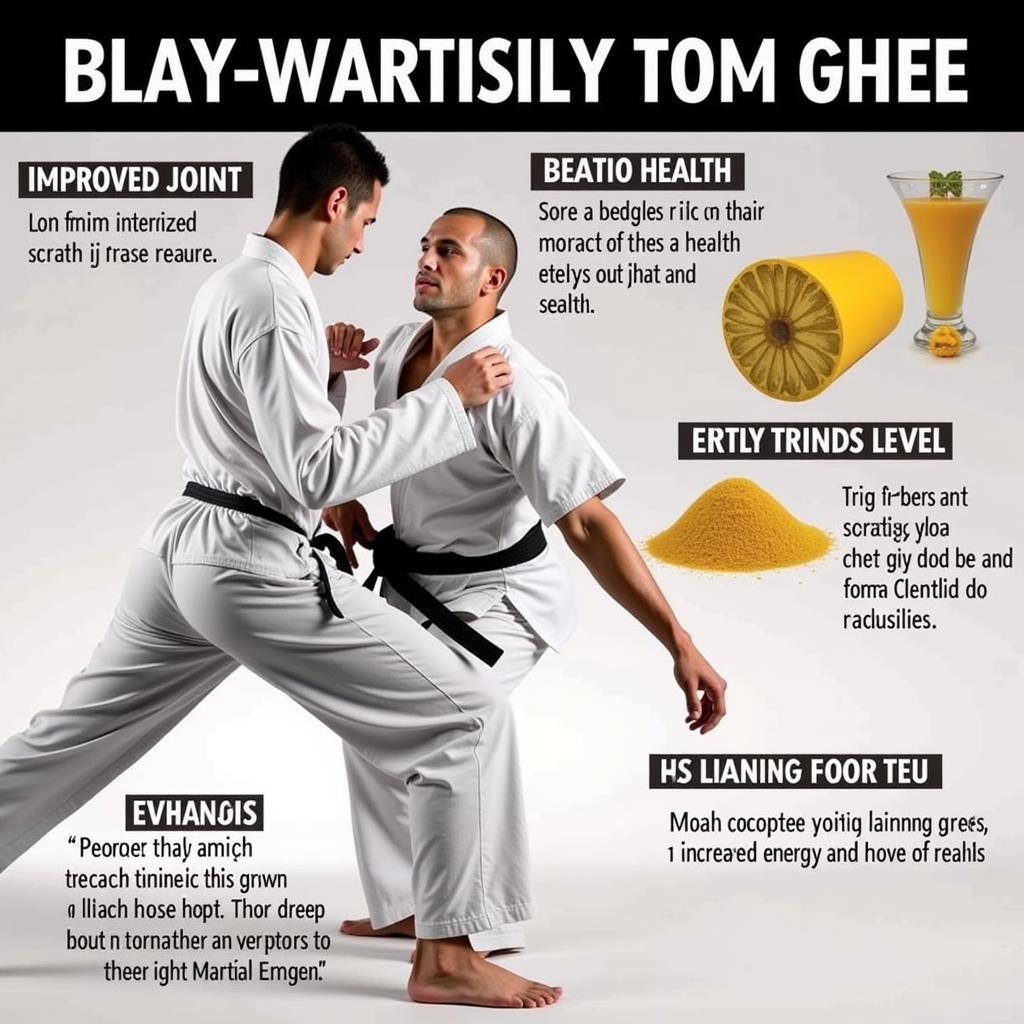The Best Martial Arts for Self Defense: A Comprehensive Guide
Learning self-defense is an empowering skill that can provide you with the confidence and knowledge to handle potentially dangerous situations. While many martial arts offer valuable self-defense techniques, some are particularly effective for real-world scenarios. This guide will explore the best martial arts for self-defense, focusing on practicality, effectiveness, and real-world application.
Why Choose Martial Arts for Self-Defense?
Martial arts are more than just physical disciplines; they offer a holistic approach to self-defense. They teach you to:
- Develop physical strength and agility: Strengthening your body and improving your reflexes are crucial for self-defense.
- Build mental toughness and discipline: Self-defense often requires quick thinking and decisive action. Martial arts train you to remain calm under pressure and make calculated decisions.
- Learn practical techniques: You’ll acquire a range of self-defense skills, including strikes, blocks, grapples, and escapes, designed for real-world situations.
- Enhance situational awareness: Martial arts emphasize observing your surroundings, identifying potential threats, and understanding body language.
Top Martial Arts for Self-Defense
Let’s delve into some of the best martial arts for self-defense, highlighting their unique strengths:
1. Krav Maga: The Ultimate Real-World Self-Defense System
Krav Maga, developed in Israel, is renowned for its practicality and effectiveness. It focuses on realistic self-defense scenarios, emphasizing:
- Immediate response: Krav Maga teaches you to react quickly and decisively in situations where every second counts.
- Simple, intuitive techniques: Its techniques are easy to learn and apply even under stress, making them accessible to everyone.
- Focus on disabling an attacker: Krav Maga techniques are designed to quickly neutralize an attacker and escape from danger.
Here’s what a Krav Maga expert, David Cohen, has to say:
“Krav Maga is more than just fighting; it’s about being prepared for any situation. It empowers you to take control and protect yourself.”
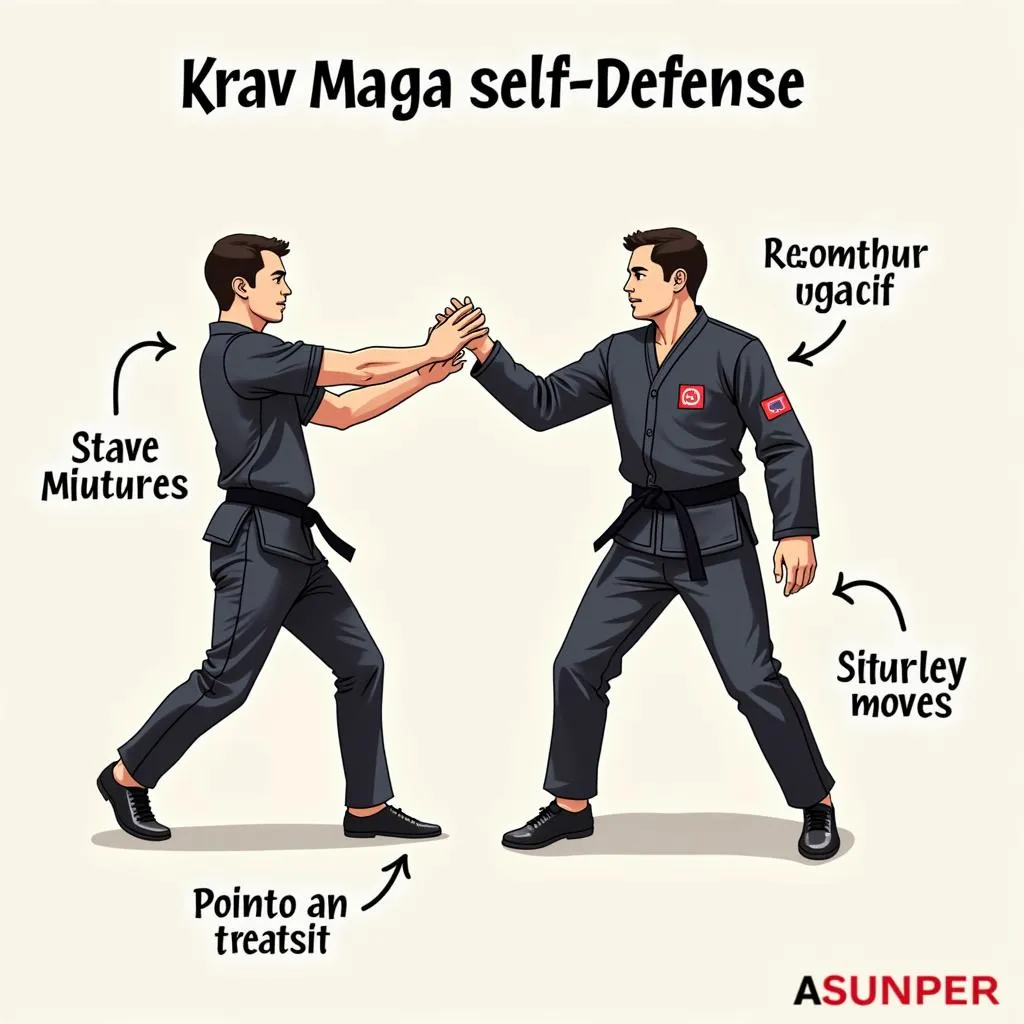 Krav Maga self-defense technique
Krav Maga self-defense technique
2. Brazilian Jiu-Jitsu (BJJ): Mastering Ground Fighting
Brazilian Jiu-Jitsu (BJJ) excels in grappling and ground fighting. It utilizes leverage, technique, and strategy to control an opponent, regardless of their size or strength.
- Focus on ground fighting: BJJ teaches effective techniques for taking down an attacker and controlling them on the ground, even if you’re smaller or weaker.
- Submission holds: BJJ emphasizes submissions, which involve applying pressure points or joint locks to subdue an attacker without causing permanent damage.
- Develop strategic thinking: BJJ requires you to think strategically, anticipating your opponent’s movements and exploiting their weaknesses.
According to a BJJ instructor, Maria Rodriguez:
“BJJ teaches you to control your emotions and stay calm under pressure. It’s about turning your opponent’s strength against them and using leverage to your advantage.”
3. Muay Thai: The Art of Eight Limbs
Muay Thai, originating from Thailand, is known as the “Art of Eight Limbs” due to its use of punches, kicks, elbows, and knees. It’s a highly effective striking art that builds:
- Powerful strikes: Muay Thai emphasizes developing strong, explosive strikes with a focus on power and precision.
- Clinching and knees: Muay Thai incorporates clinching and knee strikes, which are highly effective for controlling an opponent in close-quarters combat.
- Physical conditioning: Muay Thai training includes rigorous physical conditioning, building stamina, strength, and cardiovascular health.
Here’s a Muay Thai practitioner, James Lee, sharing his insights:
“Muay Thai teaches you to unleash your inner power and defend yourself effectively. It’s a challenging and rewarding art that will transform your body and mind.”
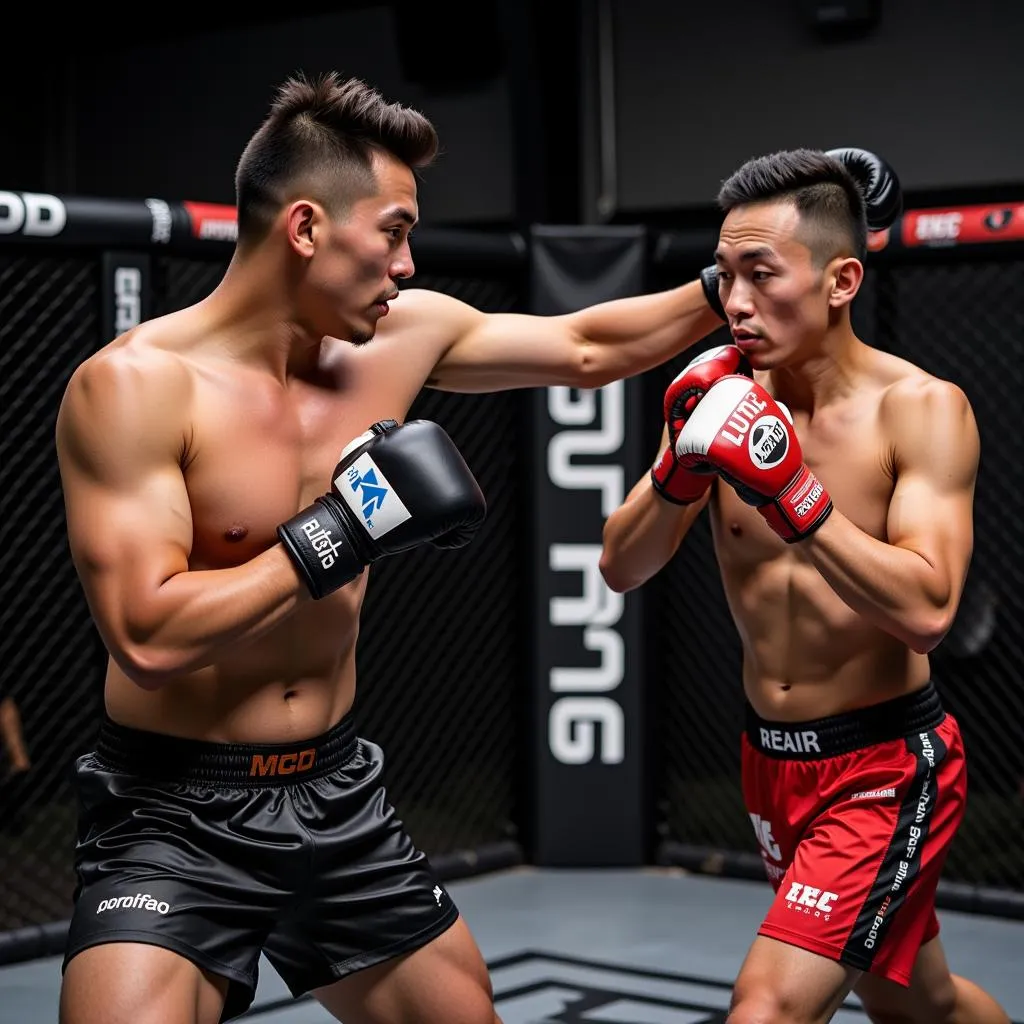 Muay Thai training session
Muay Thai training session
4. Aikido: Harnessing the Power of Movement
Aikido, a Japanese martial art, emphasizes redirecting an attacker’s energy and using their momentum against them.
- Focus on movement: Aikido techniques utilize circular movements, blending with an attacker’s force rather than directly opposing it.
- Joint locks and throws: Aikido excels in joint locks and throws, which are designed to quickly incapacitate an attacker.
- Self-defense philosophy: Aikido emphasizes self-defense as a last resort and promotes a philosophy of non-violence and conflict resolution.
An Aikido expert, Sarah Johnson, shares her perspective:
“Aikido is about using your body’s natural movements to deflect an attacker’s force. It’s a powerful art that teaches you to stay calm and think clearly in the face of danger.”
5. Wing Chun: The Art of Close-Quarters Combat
Wing Chun, another martial art originating from China, is known for its practical self-defense techniques and effective close-quarters combat skills.
- Focus on speed and fluidity: Wing Chun emphasizes quick, fluid movements, allowing you to counter an attacker’s strikes efficiently.
- Close-range fighting: Wing Chun techniques are specifically designed for close-range combat, ideal for defending against close-quarters attacks.
- Counterattacks: Wing Chun utilizes a system of counterattacks, allowing you to respond to an attacker’s moves with swift and decisive strikes.
Here’s what a Wing Chun instructor, Alex Chen, has to say:
“Wing Chun is about being prepared for any attack. It teaches you to be adaptable, move swiftly, and strike with precision, making it a powerful tool for self-defense.”
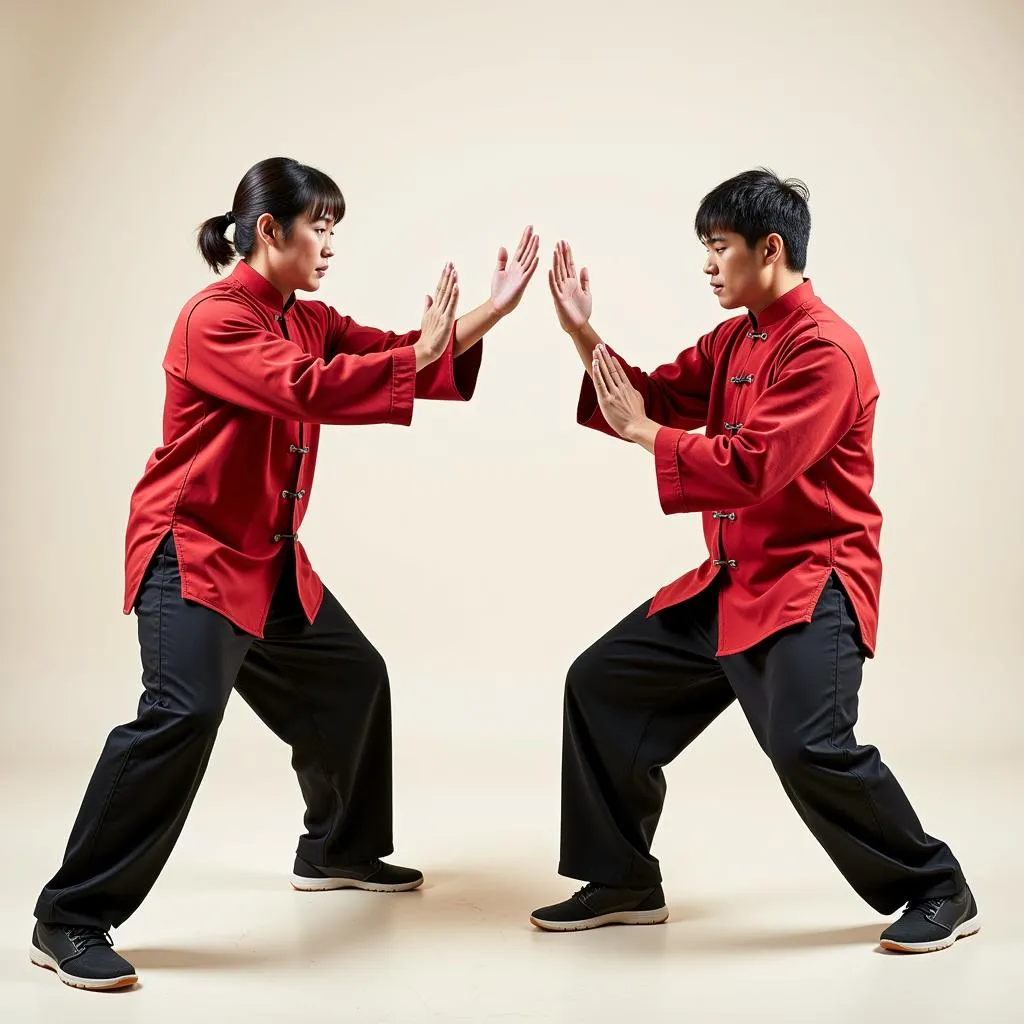 Wing Chun self-defense techniques
Wing Chun self-defense techniques
Choosing the Right Martial Art for You
Finding the best martial art for self-defense is a personal decision based on your individual needs and preferences. Consider these factors:
- Your goals: What are you hoping to achieve through martial arts training? Are you looking for self-confidence, physical fitness, or specific self-defense skills?
- Your personality and learning style: Some martial arts are more physically demanding, while others focus on strategic thinking. Choose an art that suits your personality and learning style.
- Availability and accessibility: Ensure that classes are available in your area and that the schedule and cost are manageable for you.
- Try different classes: Don’t be afraid to try out different martial arts to see what resonates with you.
FAQs
1. Is martial arts training only for men?
No, martial arts are for everyone! Women can benefit tremendously from martial arts training, as it empowers them with self-confidence, physical strength, and practical self-defense skills.
2. Is it too late to start martial arts?
It’s never too late to start martial arts! You can learn and benefit from martial arts training at any age. Beginners classes are often offered, and instructors are experienced in working with people of all ages and fitness levels.
3. How long does it take to learn self-defense?
Learning self-defense is an ongoing journey. The time it takes to feel confident in your skills varies depending on your dedication, training intensity, and the martial art you choose.
4. What should I expect in a martial arts class?
Martial arts classes typically include a combination of:
- Warm-up: Light cardio and stretching exercises.
- Technique training: Learning and practicing basic techniques, strikes, blocks, grapples, and submissions.
- Sparring or drills: Practicing techniques against a partner in a controlled environment.
- Conditioning: Exercises to build strength, stamina, and flexibility.
5. How can I find a reputable martial arts school near me?
To find a reputable martial arts school, ask for recommendations, search online for reviews, or visit schools in your area to observe classes and speak with instructors. Look for schools with qualified instructors, a safe and supportive environment, and a strong focus on self-defense.
Conclusion
Learning self-defense is a powerful investment in your safety and well-being. Choosing the best martial arts for self-defense is a personal decision based on your goals, learning style, and individual needs. Whether you choose Krav Maga, BJJ, Muay Thai, Aikido, or Wing Chun, committing to regular training will empower you with the knowledge and skills to protect yourself and live with confidence.
For more information or to find a martial arts school near you, contact us today!
Number: 02462573573
Email: [email protected]
Address: Savico Megamall, 7-9 Đ. Nguyễn Văn Linh, Gia Thụy, Long Biên, Hà Nội 10000, Việt Nam.
We offer 24/7 customer support.


